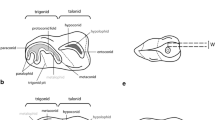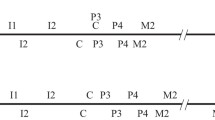Abstract
The incidence of tooth wear was studied in a wild troop ofM. fuscata, that had previously been transplanted from Arashiyama, Japan, to Texas. This study was undertaken to determine differences of attrition between males and females, and between maxillary and mandibular dentitions. Contrary to other findings, the rate of wear was not found to be an expression of sex difference, but seemed rather related to function. The following observations may suffice as examples: The mandibular third premolars function as a honing surface for the maxillary canines, and experience greater wear over time in males due to their proximity to smaller canines which leave their neighbors more vulnerable to wear.
The degree of attrition intensity is neither the same for males and females, nor the maxillary and mandibular dentitions. Certain maxillary and mandibular teeth “pair up”; although all “pairs” are identical in males and females, they rank differently in the degree of wear experienced.
Overall, females express greater attrition in the maxillary, and males in the mandibular dentitions.
Similar content being viewed by others
References
Butler, R. J., 1972. Age-related variability in occlusal wear planes.Amer. J. Phys. Anthropol., 36: 381–390.
———— &I. S. Bernstein, 1974. Canine role in dental wear patterns:Macaca nemestrina.Amer. J. Phys. Anthropol., 40: 391–396.
Clark, T. W., 1974. Transplantation and adaptation of a troop of Japanese macaques to a Texas bushland habitat. Univ. of Wisconsin, Madison, unpublished monograph.
Kenney, E. B., 1975. Development and eruption of teeth in rhesus. In:The Rhesus Monkey,G. H. Bourne (ed.), Vol. 1, Academic Press, New York, pp. 145–167.
Koyama, N., 1967. On dominance rank and kinship of a wild Japanese monkey troop in Arashiyama.Primates, 8: 189–216.
————, 1970. Changes in dominance rank and division of a wild Japanese monkey troop in Arashiyama.Primates, 11: 335–390.
Lavelle, C. L. B., 1973. Alveolar bone loss and tooth attrition in skulls from different population samples.J. Periodent. Res., 8: 395–399.
Mano, T., K. Norikoshi &N. Koyama, 1972. Report on tatooed No., individual name, age and body weight of Japanese monkeys in Arashiyama (A troop).J. Anthropol. Soc. Nippon, 80: 381–383. (in Japanese)
Molnar, S., 1971. Human tooth wear, tooth function and cultural variability.Amer. J. Phys. Anthropol., 34: 175–189.
Schultz, A. H., 1935. Eruption and decay of the permanent teeth in primates.Amer. J. Phys. Anthropol., 19: 489–581.
Sokal, R. R. &F. J. Rohlf, 1969.Biometry. W. H. Freeman & Co., San Francisco.
Steel, R. G. D. &J. H. Torrie, 1960.Principles and Procedures of Statistics. McGraw-Hill Book Co., Inc., New York.
Welsch, U., 1965. Tooth wear in living pongids.J. Dent. Res., 46: 989–992.
Yang, C. H., 1972. Attrition of dentition inMacaca.Biol. Abstracts, 54: 1259.
Author information
Authors and Affiliations
About this article
Cite this article
Nass, G.G. Sex differences in tooth wear ofMacaca fuscata, the Arashiyama-A troop in Texas. Primates 22, 266–276 (1981). https://doi.org/10.1007/BF02382616
Received:
Accepted:
Issue Date:
DOI: https://doi.org/10.1007/BF02382616




